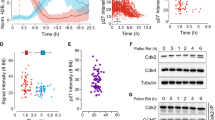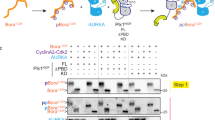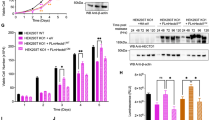Abstract
The pEg3 protein is a member of the evolutionarily conserved KIN1/PAR-1/MARK kinase family which is involved in cell polarity and microtubule dynamics. In Xenopus, pEg3 has been shown to be a cell cycle dependent kinase whose activity increases to a maximum level during mitosis of the first embryonic cell division. CDC25B is one of the three CDC25 phosphatase genes identified in human. It is thought to regulate the G2/M progression by dephosphorylating and activating the CDK/cyclin complexes. In the present study we show that the human pEg3 kinase is able to specifically phosphorylate CDC25B in vitro. One phosphorylation site was identified and corresponded to serine 323. This residue is equivalent to serine 216 in human CDC25C which plays an important role in the regulation of phosphatase during the cell cycle and at the G2 checkpoint. pEg3 is also able to specifically associate with CDC25B in vitro and in vivo. We show that the ectopic expression of active pEg3 in human U2OS cells induces an accumulation of cells in G2. This effect is counteracted by overexpression of CDC25B. Taken together these results suggest that pEg3 is a potential regulator of the G2/M progression and may act antagonistically to the CDC25B phosphatase.
This is a preview of subscription content, access via your institution
Access options
Subscribe to this journal
Receive 50 print issues and online access
$259.00 per year
only $5.18 per issue
Buy this article
- Purchase on Springer Link
- Instant access to full article PDF
Prices may be subject to local taxes which are calculated during checkout








Similar content being viewed by others
References
Baldin V, Cans C, Knibiehler M, Ducommun B . 1997 J. Biol. Chem. 272: 32731–32734
Blot J, Chartrain I, Roghi C, Philippe M, Tassan J-P . 2002 Dev. Biol. 241: 327–338
Cans C, Sert V, De Rycke J, Baldin V, Ducommun B . 1999 Anticancer Res. 19: 1241–1244
Conklin DS, Galaktionov K, Beach D . 1995 Proc. Natl. Acad. Sci. USA 92: 7892–7896
Dalal SN, Schweitzer CM, Gan J, DeCaprio JA . 1999 Mol. Cell. Biol. 19: 4465–4479
Davezac N, Baldin V, Gabrielli B, Forrest A, Theis-Febvre N, Yashida M, Ducommun B . 2000 Oncogene 19: 2179–2185
Drewes G, Ebneth A, Preuss U, Mandelkow EM, Mandelkow E . 1997 Cell 89: 297–308
Escalas N, Davezac N, De Rycke J, Baldin V, Mazars R, Ducommun B . 2000 Exp. Cell Res. 257: 206–212
Forrest A, Gabrielli B . 2001 Oncogene 20: 4393–4401
Gabrielli BG, Clark JM, McCormack AK, Ellem KA . 1997 J. Biol. Chem. 272: 28607–28614
Gabrielli BG, De Souza CP, Tonks ID, Clark JM, Hayward NK, Ellem KA . 1996 J. Cell. Sci. 109: 1081–1093
Galaktionov K, Beach D . 1991 Cell 67: 1181–1194
Gould KL, Nurse P . 1989 Nature 342: 39–45
Guo S, Kemphues KJ . 1995 Cell 81: 611–620
Harlow E, Lane D . 1988 Antibodies: A Laboratory Manual Cold Spring Harbor, NY: Cold Spring Harbor Laboratory Press
Hoffmann I, Draetta G, Karsenti E . 1994 EMBO J. 13: 4302–4310
Jinno S, Suto K, Nagata A, Igarashi M, Kanaoka Y, Nojima H, Okayama H . 1994 EMBO J. 13: 1549–1556
Karlsson C, Katich S, Hagting A, Hoffmann I, Pines J . 1999 J. Cell. Biol. 146: 573–584
Kumagai A, Dunphy WG . 1999 Genes Dev. 13: 1067–1072
Lammer C, Wagerer S, Saffrich R, Mertens D, Ansorge W, Hoffmann I . 1998 J. Cell. Sci. 111: 2445–2453
Levin DE, Bishop JM . 1990 Proc. Natl. Acad. Sci. USA. 87: 8272–8276
Liu F, Stanton JJ, Wu Z, Piwnica-Worms H . 1997 Mol. Cell. Biol. 17: 571–583
McGowan CH, Russell P . 1993 EMBO J. 12: 75–85
Millar JB, Blevitt J, Gerace L, Sadhu K, Featherstone C, Russell P . 1991 Proc. Natl. Acad. Sci. USA 88: 10500–10504
Mils V, Baldin V, Goubin F, Pinta I, Papin C, Waye M, Eychene A, Ducommun B . 2000 Oncogene 19: 1257–1265
Molinari M, Mercurio C, Dominguez J, Goubin F, Draetta GF . 2000 EMBO Rep. 1: 71–79
Morgan DO . 1997 Annu. Rev. Cell. Dev. Biol. 13: 261–291
Mueller PR, Coleman TR, Kumagai A, Dunphy WG . 1995 Science 270: 86–90
Nagase T, Seki N, Ishikawa K, Tanaka A, Nomura N . 1996 DNA Res. 3: 17–24
Nagata A, Igarashi M, Jinno S, Suto K, Okayama H . 1991 New Biol. 3: 959–968
Peng CY, Graves PR, Ogg S, Thoma RS, Byrnes 3rd MJ, Wu Z, Stephenson MT, Piwnica-Worms H . 1998 Cell Growth Differ. 9: 197–208
Peng CY, Graves PR, Thoma RS, Wu Z, Shaw AS, Piwnica-Worms H . 1997 Science 277: 1501–1505
Rice RL, Rusnak JM, Yokokawa F, Yokokawa S, Messner DJ, Boynton AL, Wipf P, Lazo JS . 1997 Biochemistry 36: 15965–15974
Russell P, Nurse P . 1987 Cell 49: 559–567
Sadhu K, Reed SI, Richardson H, Russell P . 1990 Proc. Natl. Acad. Sci. USA 87: 5139–5143
Sanchez Y, Wong C, Thoma RS, Richman R, Wu Z, Piwnica-Worms H, Elledge SJ . 1997 Science 277: 1497–1501
Woo ES, Rice RL, Lazo JS . 1999 Oncogene 18: 2770–2776
Yang J, Winkler K, Yoshida M, Kornbluth S . 1999 EMBO J. 18: 2174–2183
Acknowledgements
We are very grateful to the Kazusa Research Institute for providing us with the KIAA0175 cDNA. We also thank Martha Molinari for the kind gift of CDC25A expression plasmid. We are grateful to Dr J-G Delcros and S Lelouch for their help with FACS analysis presented in Figure 7. Support for this work was provided by the Comité de la Haute-Garonne de la Ligue contre le Cancer and by the Association pour la Recherche contre le Cancer (programme ARECA and ARC no: 5960).
Author information
Authors and Affiliations
Corresponding author
Rights and permissions
About this article
Cite this article
Davezac, N., Baldin, V., Blot, J. et al. Human pEg3 kinase associates with and phosphorylates CDC25B phosphatase: a potential role for pEg3 in cell cycle regulation. Oncogene 21, 7630–7641 (2002). https://doi.org/10.1038/sj.onc.1205870
Received:
Revised:
Accepted:
Published:
Issue Date:
DOI: https://doi.org/10.1038/sj.onc.1205870
Keywords
This article is cited by
-
Using phosphoproteomics data to understand cellular signaling: a comprehensive guide to bioinformatics resources
Clinical Proteomics (2020)
-
Maternal embryonic leucine zipper kinase is a novel target for diffuse large B cell lymphoma and mantle cell lymphoma
Blood Cancer Journal (2019)
-
Thr55 phosphorylation of p21 by MPK38/MELK ameliorates defects in glucose, lipid, and energy metabolism in diet-induced obese mice
Cell Death & Disease (2019)
-
Inhibition of maternal embryonic leucine zipper kinase with OTSSP167 displays potent anti-leukemic effects in chronic lymphocytic leukemia
Oncogene (2018)
-
Comparative genetic, proteomic and phosphoproteomic analysis of C. elegans embryos with a focus on ham-1/STOX and pig-1/MELK in dopaminergic neuron development
Scientific Reports (2017)



